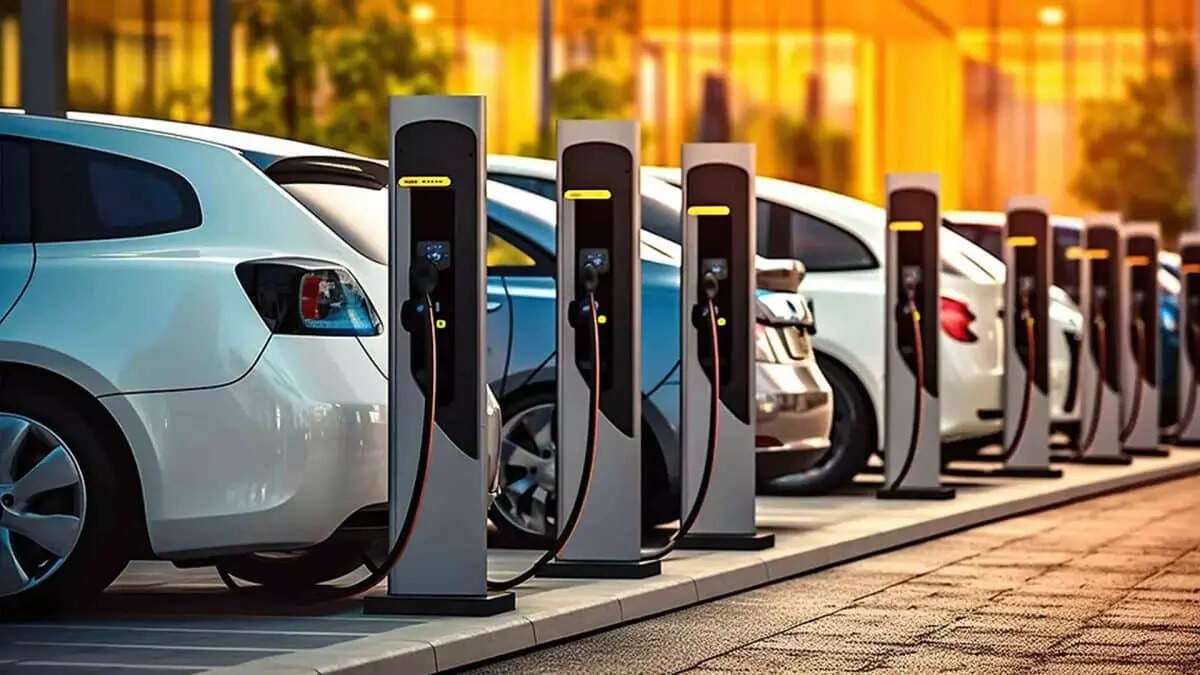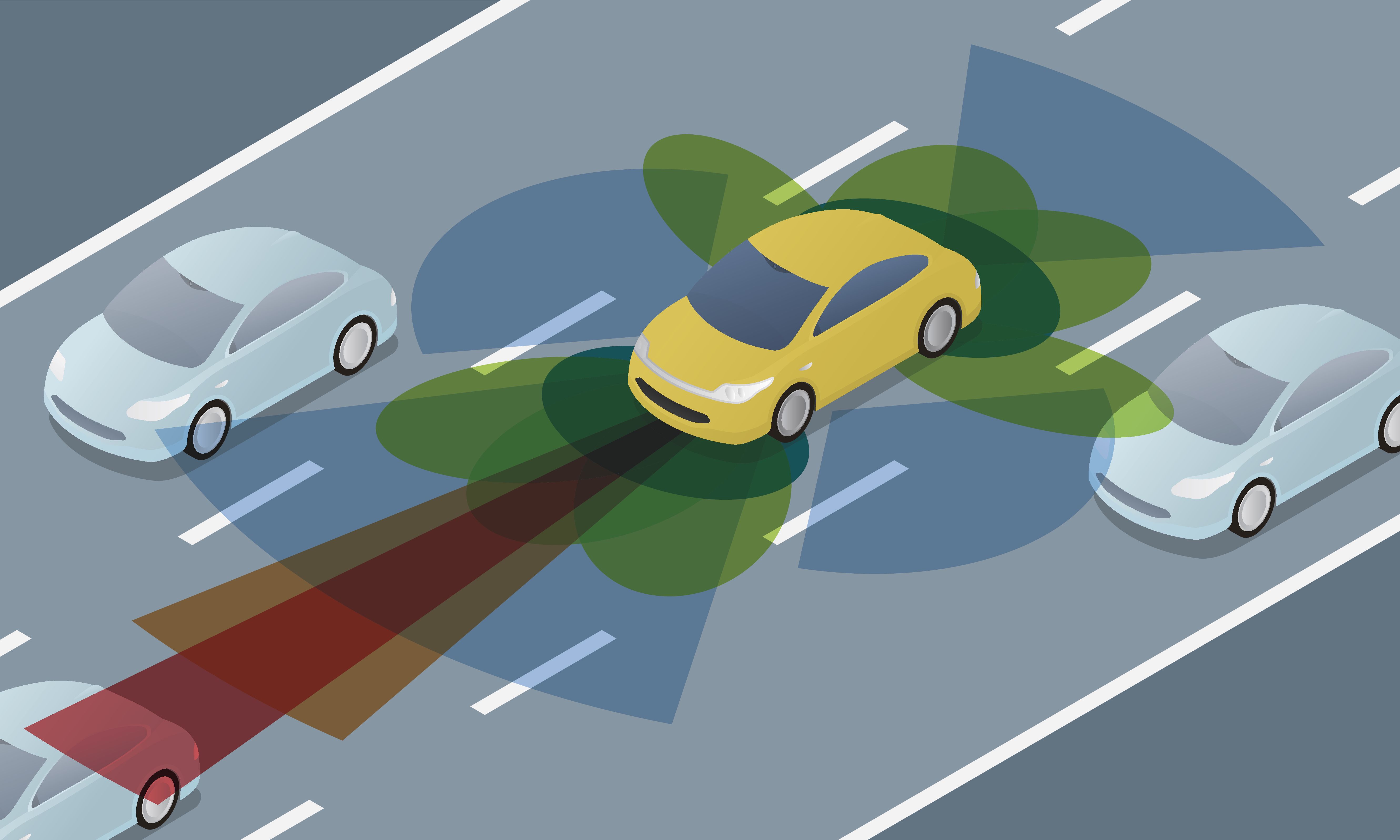
Table of Contents
Automotive News- The automotive industry is ever-evolving, marked by rapid advancements in technology, design, and sustainability. As we enter a new era of innovation, it’s essential to stay informed about the most groundbreaking developments that are shaping the future of driving. In this article, we explore five of the most exciting automotive news updates that are making waves in the automotive world today. From futuristic vehicles to eco-friendly breakthroughs, these updates offer a glimpse into the direction the automotive industry is heading.
1. The Rise of Electric Vehicles (EVs)

The automotive landscape is undergoing a dramatic transformation, driven by the widespread adoption of electric vehicles (EVs). As concerns over climate change and fossil fuel dependency intensify, the rise of EVs stands as a beacon of innovation and sustainability in the transportation sector. With advancements in technology, consumer demand, and regulatory pressures, electric vehicles are poised to become a central pillar of the future of mobility.
EVs are no longer relegated to the fringes of the automotive market. They are rapidly moving into the mainstream, with automakers across the globe investing heavily in their development. Leading companies such as Tesla, Nissan, and BMW have already demonstrated that electric vehicles can offer not only eco-friendliness but also style, performance, and practicality. The appeal of electric vehicles is multifaceted—consumers are drawn to their lower environmental impact, reduced operational costs, and the promise of cutting-edge technology.
At the heart of the rise of electric vehicles is the ongoing evolution of battery technology. Innovations in battery capacity, energy efficiency, and charging speed have alleviated some of the major concerns that once plagued EV adoption. Lithium-ion batteries, once viewed as a limiting factor, are becoming more advanced and less expensive, making electric cars more accessible to the average consumer. The ability to drive longer distances on a single charge, coupled with faster charging times, has significantly reduced the anxiety that many consumers once felt about the limitations of EVs.
Government incentives and policy changes have played a crucial role in accelerating the adoption of electric vehicles. Tax breaks, rebates, and exemptions from certain fees make EVs more financially viable for buyers. Additionally, cities and countries around the world are setting ambitious goals for the reduction of carbon emissions and the transition to sustainable energy sources. As part of this, many regions are pushing for a ban on the sale of new gasoline-powered vehicles within the next few decades, further solidifying the role of electric vehicles in the future of transportation.
Beyond environmental benefits, electric vehicles are also reshaping the driving experience. Their quiet operation, smooth acceleration, and sophisticated technology create a driving environment that is both futuristic and enjoyable. Features such as regenerative braking, advanced infotainment systems, and autonomous driving capabilities are rapidly becoming standard in many EVs, offering consumers an unmatched level of convenience and innovation.
The transition to electric mobility is also having a ripple effect on other industries. The demand for EVs has sparked the creation of new supply chains for electric vehicle components, such as batteries, charging infrastructure, and electric drivetrains. As the market expands, companies are racing to develop more efficient charging stations, with the aim of creating a seamless, nationwide network that makes charging as simple and accessible as refueling a gasoline car.
In conclusion, the rise of electric vehicles represents a paradigm shift in the automotive industry. As battery technology advances, government policies support green initiatives, and consumer demand surges, electric vehicles are set to dominate the roads of tomorrow. With their promise of sustainability, innovation, and a cleaner future, electric vehicles are undeniably charting the course for the future of transportation.
2. Autonomous Vehicles: The Road to Self-Driving Cars

The journey toward autonomous vehicles (AVs) has captured the imagination of engineers, tech enthusiasts, and everyday commuters alike. What was once confined to science fiction is now steadily becoming a reality, as advancements in artificial intelligence (AI), machine learning, and sensor technology pave the way for self-driving cars. Autonomous vehicles are not just about convenience—they promise to transform the very fabric of how we experience mobility, with far-reaching implications for road safety, urban planning, and the global transportation landscape.
At the core of the autonomous vehicle revolution is the use of advanced sensors and computational systems that enable cars to navigate and make decisions without human intervention. These vehicles rely on a combination of radar, lidar, cameras, and AI algorithms to perceive their surroundings, detect obstacles, and interpret complex traffic scenarios. Unlike traditional vehicles, which require a human driver to control every aspect of the journey, autonomous cars are equipped with systems that can drive, steer, accelerate, and brake independently. This level of automation, commonly referred to as Level 4 or Level 5 autonomy, eliminates the need for human input in most driving conditions.
The promise of autonomous vehicles extends beyond mere automation. AVs hold the potential to dramatically reduce accidents, many of which are caused by human error. In fact, studies suggest that autonomous cars could reduce traffic fatalities by up to 90%, as these vehicles can respond faster than humans and make more informed decisions in critical situations. AI-powered safety systems allow the vehicle to react to sudden obstacles, detect and avoid potential collisions, and even communicate with other vehicles to prevent accidents. This leap forward in safety is particularly promising for those who are vulnerable on the roads, such as pedestrians, cyclists, and the elderly.
One of the most exciting aspects of autonomous vehicles is their ability to reshape urban transportation. With self-driving technology, cities could see a future where ride-sharing fleets replace traditional car ownership models. Instead of owning a car, commuters could summon an autonomous vehicle via a mobile app, traveling with greater efficiency and minimal environmental impact. This shift could alleviate congestion, reduce parking needs, and cut down on pollution, particularly in dense urban environments where traffic bottlenecks are a constant issue.
Moreover, AVs could lead to a rethinking of infrastructure design. Streets and roads could be optimized for autonomous traffic, enabling smoother traffic flow and reducing the need for traffic lights and signs. Over time, this could give rise to more pedestrian-friendly spaces and a reduced reliance on traditional vehicles, making cities more livable and sustainable.
However, the road to fully autonomous driving is not without its challenges. Legal, ethical, and regulatory concerns must be addressed before self-driving cars can be deployed on a large scale. Governments around the world are grappling with how to regulate AV technology, establish liability in the case of accidents, and create safety standards that can keep pace with the rapid advancements in autonomous driving capabilities. Additionally, public trust in the technology will need to be cultivated through careful testing and transparent communication.
In conclusion, the road to self-driving cars is paved with technological innovation, societal benefits, and significant hurdles. As autonomous vehicles continue to evolve, they offer a glimpse into a future where transportation is safer, more efficient, and more accessible. While full autonomy may still be a few years away, the momentum is undeniable, and the path forward promises to redefine how we navigate the world around us.
3. Sustainability in Automotive Manufacturing

The automotive industry is increasingly shifting its focus toward sustainability in manufacturing, as both consumer demand and regulatory pressure push for greener, more eco-friendly practices. With the looming threat of climate change, manufacturers are beginning to reconsider how their vehicles are produced, the materials used, and the environmental impact of their entire supply chain. The goal is clear: reduce the carbon footprint of car production while maintaining high standards of performance, safety, and affordability.
One of the key aspects of sustainability in automotive manufacturing is the adoption of eco-friendly materials. Traditional vehicle production relies heavily on metal, plastic, and synthetic materials, many of which are derived from non-renewable resources. However, forward-thinking companies are exploring the use of recycled materials, bioplastics, and renewable resources to reduce the environmental impact of vehicle production. For instance, plant-based fibers and natural rubber are becoming increasingly popular as substitutes for synthetic materials. In addition, many automakers are focusing on reducing harmful chemicals in production, opting for non-toxic alternatives that are safer for both the environment and the workers involved in manufacturing.
Another major consideration is energy efficiency during the production process. The energy required to manufacture a car is substantial, and for decades, automotive factories have been powered by fossil fuels. However, leading manufacturers are now transitioning to renewable energy sources, such as solar and wind, to power their factories. By shifting to cleaner energy options, companies are reducing the carbon emissions associated with the manufacturing process. This is part of a broader movement to make the entire production chain more sustainable, from raw material extraction to assembly line operations. Furthermore, the use of energy-efficient machinery and smart manufacturing techniques is helping to minimize waste and reduce energy consumption in car production.
The move towards sustainable manufacturing also includes the greening of the supply chain. Automakers are increasingly holding their suppliers to higher environmental standards, ensuring that the components used in vehicles are produced using sustainable practices. This includes sourcing materials responsibly, minimizing waste during the manufacturing process, and ensuring that products are recyclable at the end of their life cycle. Many companies are also working closely with recycling firms to close the loop on materials, ensuring that parts like batteries, metal components, and plastics are reused or repurposed rather than being discarded in landfills.
The focus on electric vehicle (EV) production is also driving sustainability efforts in the automotive sector. The shift towards EVs is not only about reducing tailpipe emissions but also about transforming how vehicles are built. EVs require different manufacturing techniques compared to traditional internal combustion engine (ICE) vehicles, with a significant focus on battery production. The production of batteries, particularly lithium-ion batteries, presents its own set of environmental challenges. As a result, automakers are heavily investing in battery recycling technologies and alternative materials to reduce the environmental impact of EV battery production. This is an ongoing challenge, but advances in battery chemistry and recycling methods offer promising solutions for creating a more sustainable EV ecosystem.
In conclusion, sustainability in automotive manufacturing is not a fleeting trend but rather a necessity in the modern automotive world. As manufacturers embrace green technologies, use more sustainable materials, and rethink production processes, the industry is taking meaningful steps toward a more environmentally responsible future. By addressing both the immediate and long-term challenges of sustainable manufacturing, the automotive sector is positioning itself to play a pivotal role in the global transition toward a greener economy.
4. The Evolution of In-Car Technology
In-car technology has undergone a dramatic transformation over the past few decades, shifting from basic functionality to sophisticated, intuitive systems that are integral to the driving experience. As vehicles become increasingly connected and digital, the role of technology within the car has expanded beyond mere convenience, becoming a vital part of vehicle safety, entertainment, and efficiency. The evolution of in-car technology is reshaping how drivers interact with their vehicles, offering features that enhance not only comfort but also overall driving performance.
The early days of in-car technology were marked by rudimentary systems like AM/FM radios and cassette players, which were revolutionary at the time but relatively basic compared to today’s innovations. Over time, the introduction of compact disc (CD) players and tape decks was seen as a significant advancement in how drivers enjoyed music on the road. Yet, the real game-changer came with the rise of infotainment systems, which combined entertainment with navigation, communication, and even vehicle diagnostics into a single, integrated interface.
Modern infotainment systems have become the nerve center of a vehicle, offering touchscreen displays, voice recognition, and seamless connectivity to smartphones and smart devices. Features like Apple CarPlay and Android Auto allow drivers to integrate their mobile devices with the car’s infotainment system, providing access to music, messaging, navigation, and apps with just a few taps or voice commands. This shift towards smarter systems has elevated the driver experience, allowing for greater convenience, connectivity, and accessibility.
Safety, once primarily reliant on passive features like seatbelts and airbags, has also seen a major leap due to in-car technology. Today’s vehicles are equipped with an array of advanced driver-assistance systems (ADAS), which include features like lane departure warning, adaptive cruise control, and emergency braking. These systems use cameras, radar, and sensors to monitor the vehicle’s surroundings and assist drivers in making safer decisions. Additionally, blind-spot detection and 360-degree cameras provide drivers with enhanced awareness, reducing the likelihood of accidents caused by human error. The integration of AI algorithms further refines these systems, making them more responsive and reliable under various conditions.
The evolution of in-car technology has also extended to the realm of autonomous driving. While fully self-driving cars are still in development, numerous automakers have introduced semi-autonomous features that allow for partial vehicle automation. Tesla’s Autopilot and other advanced driving systems allow the car to steer, accelerate, and brake autonomously in certain driving conditions, such as highway driving. This shift marks the beginning of a new era in which in-car technology could ultimately replace human drivers entirely, radically transforming how vehicles are operated and reducing the potential for accidents.
Fuel efficiency and environmental concerns have further fueled in-car technological innovations. With the rise of electric vehicles (EVs), automotive manufacturers are integrating advanced battery management systems to optimize energy use and extend driving range. Additionally, vehicles now come equipped with real-time diagnostics that monitor fuel efficiency, tire pressure, and other important metrics, alerting drivers to potential issues before they become costly problems.
Looking forward, in-car technology is set to become even more advanced, with the potential for augmented reality (AR) head-up displays, biometric sensors, and further integration of 5G connectivity. These innovations will enable cars to become even smarter, predicting the needs of the driver and offering an increasingly seamless and personalized experience.
In conclusion, the evolution of in-car technology reflects the rapid pace of innovation in the automotive industry. What was once simple entertainment and basic safety features have now become sophisticated systems that integrate seamlessly into daily life, enhancing everything from safety and convenience to the overall driving experience. As these technologies continue to develop, the future of in-car technology promises to bring even greater advancements that will redefine what it means to drive.
5. The Shift Towards Mobility as a Service (MaaS)
The concept of Mobility as a Service (MaaS) is reshaping how people think about transportation. Rather than owning a car, MaaS focuses on providing users with flexible, on-demand access to a range of transportation options, including cars, buses, bikes, and even ride-sharing services.
One of the most significant developments in MaaS is the rise of shared electric vehicle fleets. Companies like Uber and Lyft are partnering with automakers to integrate electric vehicles into their fleets, offering consumers a cleaner, more sustainable alternative to traditional gasoline-powered rides. Additionally, cities around the world are experimenting with shared autonomous vehicle fleets, which could completely transform urban transportation by providing efficient, on-demand rides that are both affordable and eco-friendly.
In addition to shared vehicles, MaaS also encompasses micro-mobility options such as e-scooters and e-bikes. These alternatives offer a convenient and environmentally-friendly way to navigate short distances, particularly in urban areas where traffic congestion is a major issue.
The growth of MaaS is also closely tied to the development of smart cities. As urban areas become more connected through IoT (Internet of Things) technology, MaaS platforms are able to offer real-time data on available transportation options, traffic conditions, and even environmental factors such as air quality. This level of connectivity ensures that users can make more informed decisions about their travel, improving convenience and reducing their environmental impact.
The future of transportation is rapidly changing, and MaaS is a key driver of this transformation. With the continued expansion of shared electric vehicle fleets, autonomous transportation, and micro-mobility options, the way we move from point A to point B will look very different in the years to come.
Conclusion
The automotive industry is undergoing a profound transformation, with innovations ranging from electric vehicles and autonomous technology to sustainable manufacturing practices and cutting-edge in-car systems. These five exciting automotive news updates provide a glimpse into the future of transportation, where efficiency, sustainability, and connectivity are at the forefront. As the industry continues to evolve, one thing is clear: the future of driving will be more dynamic, environmentally-friendly, and technologically advanced than ever before.




